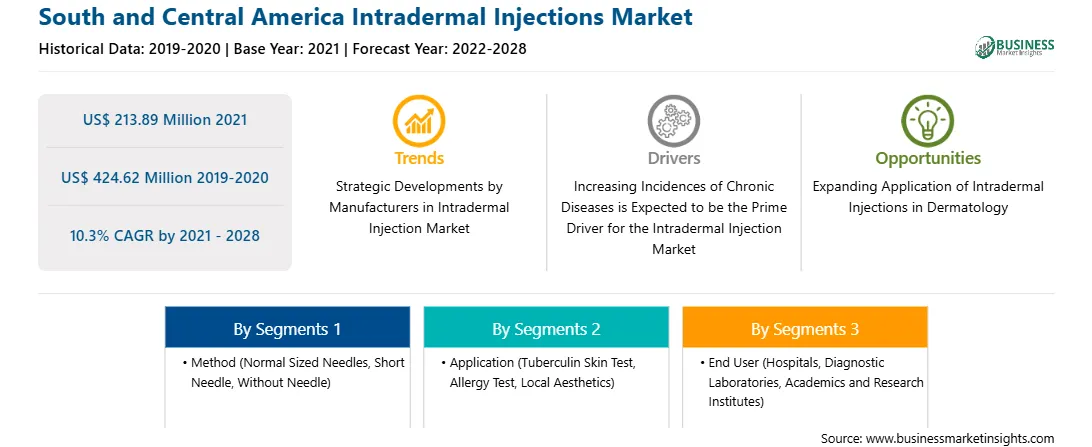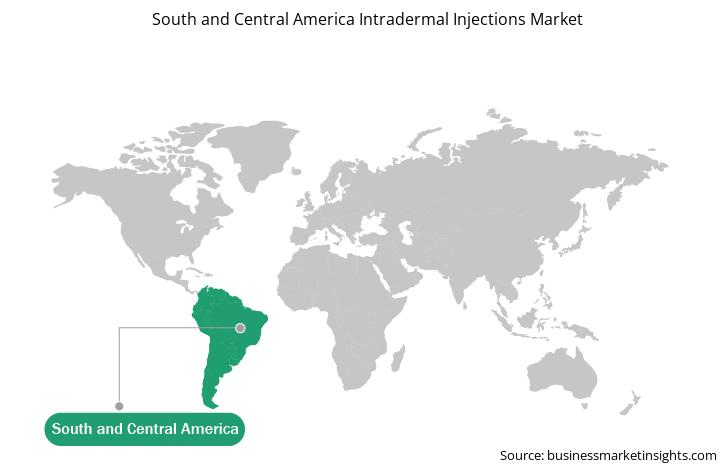Developed and Developing Countries Provide Significant Growth Opportunities to Market
Health systems in developing economies focus on introducing various advanced therapeutic, diagnostic, and aesthetic technologies into their service portfolios to be able to provide healthcare facilities with high efficiency. In developed countries, intradermal devices have received significant acceptance in vaccination and cosmetic procedures. In developing countries, although these devices are mainly used in vaccination, tuberculosis diagnosis, and aesthetic procedures, the market is currently in a nascent stage of development. Many developing countries are attractive destinations for medical tourism, especially for aesthetic procedures due to the lower costs of these procedures than developed countries. Health facilities, medical spas, and wellness centers in developing countries are increasingly offering a comprehensive range of inexpensive but high-quality medical-aesthetic procedures, which, eventually, triggers the demand for intradermal injections. The leading manufacturers of intradermal injections are developing ideal devices and collaborating with other players to improve the therapeutic efficacy of existing and new drugs. The rapid pace of urbanization, surging investments by healthcare providers in improving infrastructure, growing awareness among the population, and increasing availability of a range of advanced products and technologies are all contributing to the growth of this market.
The intradermal injections market in South & Central America is segmented into Brazil, Argentina, and the Rest of South & Central America. In Brazil, the aging population is rising at a rapid pace, and the country faces regional and historical socioeconomic inequalities. It leads the South American pharmaceuticals market and medical device market, which can be mainly due to the huge population burden and a developed healthcare sector. With the high incidence of various communicable and noncommunicable diseases, the demand for intradermal injections has surged in the past few years. According to World Health Organization (WHO), the incidence rate of tuberculosis in Brazil was 45 per 100,000 population, with a detection rate of 78%, in 2020. Further, the growing cases of allergies, kidney diseases, cancer, etc., are likely to drive the adoption of medical devices, which will eventually drive the Brazil medical devices market during the forecast period.

Strategic insights for the South and Central America Intradermal Injections provides data-driven analysis of the industry landscape, including current trends, key players, and regional nuances. These insights offer actionable recommendations, enabling readers to differentiate themselves from competitors by identifying untapped segments or developing unique value propositions. Leveraging data analytics, these insights help industry players anticipate the market shifts, whether investors, manufacturers, or other stakeholders. A future-oriented perspective is essential, helping stakeholders anticipate market shifts and position themselves for long-term success in this dynamic region. Ultimately, effective strategic insights empower readers to make informed decisions that drive profitability and achieve their business objectives within the market.

| Report Attribute | Details |
|---|---|
| Market size in 2021 | US$ 213.89 Million |
| Market Size by 2028 | US$ 424.62 Million |
| Global CAGR (2021 - 2028) | 10.3% |
| Historical Data | 2019-2020 |
| Forecast period | 2022-2028 |
| Segments Covered |
By Method
|
| Regions and Countries Covered | South and Central America
|
| Market leaders and key company profiles |
The geographic scope of the South and Central America Intradermal Injections refers to the specific areas in which a business operates and competes. Understanding local distinctions, such as diverse consumer preferences (e.g., demand for specific plug types or battery backup durations), varying economic conditions, and regulatory environments, is crucial for tailoring strategies to specific markets. Businesses can expand their reach by identifying underserved areas or adapting their offerings to meet local demands. A clear market focus allows for more effective resource allocation, targeted marketing campaigns, and better positioning against local competitors, ultimately driving growth in those targeted areas.

The South & Central America intradermal injections market is segmented on the basis of method, application, end user, and country. Based on method, the market is segmented into normal sized needle, short needle, and without needle. The normal sized needles segment registered the largest market share in 2021. The normal sized needles segment is further subsegmented into intradermal microinjections, microneedle arrays, and tattoo devices. The short needle segment is bifurcated into intradermal liquid jet injectors and ballistic intradermal injectors. In terms of application, the South & Central America intradermal injections market is segmented into tuberculin skin test, allergy test, local aesthetics, and others. The tuberculin skin test segment held the largest market share in 2021. The South & Central America intradermal injections market, by end user, is segmented into hospitals, diagnostic laboratories, academics and research institutes, and others. The hospitals segment held the largest market share in 2021. Based on country, the market is segmented into Brazil, Argentina, and rest of South & Central America. Brazil dominated the market share in 2021.
BD; West Pharmaceutical Services, Inc; Terumo Corporation; Nanopass; PharmaJet; Idevax; Eunsung Global; Crossject; Cardinal Health Inc; and Hindustan Syringes and Medical Devices Ltd are the leading companies operating in intradermal injections market in the South & Central America region.
The South and Central America Intradermal Injections Market is valued at US$ 213.89 Million in 2021, it is projected to reach US$ 424.62 Million by 2028.
As per our report South and Central America Intradermal Injections Market, the market size is valued at US$ 213.89 Million in 2021, projecting it to reach US$ 424.62 Million by 2028. This translates to a CAGR of approximately 10.3% during the forecast period.
The South and Central America Intradermal Injections Market report typically cover these key segments-
The historic period, base year, and forecast period can vary slightly depending on the specific market research report. However, for the South and Central America Intradermal Injections Market report:
The South and Central America Intradermal Injections Market is populated by several key players, each contributing to its growth and innovation. Some of the major players include:
The South and Central America Intradermal Injections Market report is valuable for diverse stakeholders, including:
Essentially, anyone involved in or considering involvement in the South and Central America Intradermal Injections Market value chain can benefit from the information contained in a comprehensive market report.